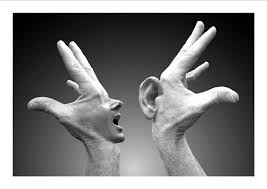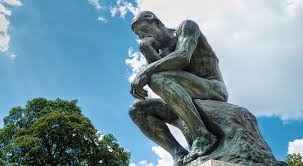March 22, 2018
 Mindfulness and Psychotherapy: Deepening the Conversation
Mindfulness and Psychotherapy: Deepening the Conversation
© 2017 Marjorie Schuman, PhD
Hokusai says look carefully.
He says pay attention, notice.
He says to keep looking, stay curious.
He says there is no end to seeing..
INTRODUCTION
Both psychotherapy and Buddhist mindfulness meditation have the purpose of helping us to get to know our own minds. The shared core of these two modalities of introspection is the ability to notice and be with what is; to be intimate with the present moment of experience. Despite this core similarity, however, Buddhist meditation and psychotherapy are also distinct from each
other in significant ways, including differences in purpose, process and practice. My book, “Mindfulness-Informed Relational Psychotherapy and Psychoanalysis: Inquiring Deeply”
(abbreviated in this essay as “INQUIRING DEEPLY”) is a series of reflections on mindful\awareness in Buddhist practice and psychotherapy. It addresses the following basic questions:
• What are the essential similarities and differences between Buddhism and psychotherapy?
• Is Buddhist practice itself a form of psychotherapy?
• Can mindfulness practice help bring psychodynamic efforts to fruition? And, if so, how?
The underlying purpose in the book is to elucidate how mindfulness in dharma practice and mindfulness-informed psychotherapy can be integrated into a single coherent frame.
In addition, INQUIRING DEEPLY also asks these pragmatic questions:
• What is a wise relationship to problems?
• What are the elements of a skillful means of “being with” problems?
&
• How can someone best “practice with” problems, in the dharmic sense of practice?
It became apparent to me that this skillful means could not be looking for something; it needed to be looking deeply into something. So the central question in INQUIRING DEEPLY became the following:
• How can we look deeply into problems in a way that breathes space into them, decodes their hidden meanings, and allows them to resolve?
The point of view in INQUIRING DEEPLY is that it is possible to engage an integrated and unfolding path of deepening insight which can, alternatively, be conceptualized as mindfulness-informed
psychotherapy and/or as psychologically-informed dharma practice. The book is a guide to understanding this path; an overview of how people change. In this article, excerpts from the book have been selected, grouped, and woven together into several discussions under the headings that follow.
INQUIRING DEEPLY DEFINED
Inquiring Deeply can be defined most simply as a blended psychotherapeutic approach which integrates mindfulness with psychotherapeutic technique, one which is intended to engage the
client/ patient at the levels of narrative, regulation of affect, and psychodynamic understanding. Its fundamental elements are mindful awareness, self-reflection, and deep connection.
There are certain key differences between Buddhist “mindfulness of mind” and mindful self-reflection in psychotherapy. The primary difference concerns what we are asked to be mindful of. Psychologically-focused self-reflective awareness, which I call “Inquiring Deeply,” places emphasis on the psychological world of lived experience; the personal autobiographical space
of the mind. In contrast, Buddhist mindfulness o fmind — the third foundation of mindfulness – – is inclusive of what we are conscious of, as well as of the subjective qualities of that consciousness, but its emphasis is on universal and impersonal attributes of human experience. It brings mindful attention to how the mind relates
to and gets entangled with the world which it creates; its tendencies to grasp after, push away, and go unconscious to experience; its
ignorance of important truths.
As is widely understood in the mental health professions, but not always in Buddhist circles, the mind is inherently relational.
This fact explains why the issues which are most often problematic for people are emotional/ interpersonal in nature: they are
embedded in unseen relational patterns. The most essential premise in this approach is that emotional well-being is a function of
the quality of our connections with others. Inquiring Deeply explores inner experience through this thematic lens, looking into the way interpersonal experience is structured and the
developmental factors which have contributed to making it that way.
I want to emphasize that Inquiring Deeply is not a new “brand” of psychotherapy. It is not something the therapist does as a clinical intervention; it’s not something the therapist teaches the patient (I refer to the people I work with as “patients” rather than “clients” in
accordance with the psychoanalytic clinical model) nor is it something done by the patient under the direction of the therapist. It is, rather, a paradigm for psychodynamic understanding,
which is conceptually informed by Buddhist psychology and contemporary psychoanalysis, and experientially informed by mindfulness practice. It is based on the strategic use of Buddhist methods of practice (mindfulness, investigation, and inquiry) to amplify and ‘unpack’ psychological experience.
The method of inquiry can be most simply defined as looking into the nature of something in a deliberately open and receptive state of mind in order to allow something new to be discovered. As I use the term, inquiry is a deliberate, strategic, and sustained process of “living in the question” of something, in contrast to “investigation,” which is the probing of experience as it arises. Finding the right questions is the art of inquiry, and is itself a process; questions
become progressively more refined and clear as we be with them over time. Once a question has been posed, the major task is simply to keep questioning and looking, sustaining an attitude
of curiosity and receptiveness.
(When inquiry is done as a formal meditation process, it can also be called “contemplative inquiry.”)
The optimal state of mind in inquiry is aptly described as “opening the hand of thought.” K. Uchiyama (2004) used this phrase to describe Zen meditation, but it is a good description of
the optimal mental state for inquiry as well. This is a state of mind which is open and receptive, one which neither holds onto nor pushes away thoughts. It rests on a platform of mindful
attention. This quality of mind invites an experience of not knowing, which can be both creative and generative. I liken the process of inquiry to an extended conversation that takes place between someone and the “external world” simultaneously. For me, the typical sequence is generally something like this: first, a question arises in my mind. Sometimes this begins with a word or a phrase that starts to echo in my thoughts. Then, generally within a day or two, I find that something – just the ‘right’ something – emerges: an insight; a comment someone makes as we are speaking
together; or something that comes up in a therapy session with a patient. In the mystery of unconscious process, it feels as though life itself is alive and responsive to my inquiry; that
answers are generated from (called forth by?) my intention to ‘answer’ a particular question.
Inquiring Deeply has the aim of transforming and reorganizing the patient’s self-experience. The process of inquiry can be directed in two ways: through mindful self-reflection, and/or in dialogue with a mindful therapist. This amounts to a creative synthesis of mindfulness meditation and psychodynamic/relational psychotherapy in which someone can discover their own
deepest, subjective truths. (INQUIRING DEEPLY includes many clinical examples.)
THE RELATIONAL NATURE OF SUFFERING
Sensitivity and reactivity to other people – to what they say and do (or what they don’t say or don’t do) – dominates much of our experience. Relationships with significant others throughout
the life span are the primary regulators of our emotional equilibrium, as well as emotional (and physical!) health. To feel affirmed, accepted, and loved is the basic impetus behind psychological development. The pain of feeling separate, insufficiently appreciated and understood, unworthy,
or unloved lies at the experience of most suffering. Relational trauma lies at the core of most psychological wounds.
For this reason, having a clear understanding of relational issues is at the heart of Inquiring Deeply. When we begin by exploring the upsets that occur between ourselves and others, we can systematically cultivate self-reflective awareness, with the goal of deepening our emotional understanding of our own patterns of attachment and of the interpersonal dynamics that get generated between ourselves and others. At another layer of the same inquiry, we can begin to discern the dharmic predicaments that come into play in relationships as a result of our grasping for what we want, our aversion to what we don’t like, and our personal
unconsciousness of ourselves.
Although relational suffering is not acknowledged as such in the teachings of Buddhism, it is readily understood within the Buddhist concept of “dukkha” – the primary unsatisfactoriness that permeates our experience as human beings. As we dig down into relational dukkha, what we find there is always the same: in simple terms, not having what we want from others and/or not wanting what we do have. This fundamental Buddhist reality does not, however, directly address the psychological complexities. Relational dukkha is held in place by layers of psychological meaning. Perhaps this point may be understood by analogy with physics: Buddhism brilliantly Illuminates the basic atomic structure of suffering but does not much concern itself with the molecular configurations in which suffering presents itself. Buddhist psychology highlights the universal core elements in suffering – grasping, aversion, and ignorance – but it does not concern itself directly with the matrix of psychological factors which organize those core experiences into
meaning. It does not delve into the dukkha of our relational entanglements.
Inquiring Deeply fills in some of this territory by investigating the narrative as well as enacted meanings that organize our relational lives. By inquiring deeply into the upsets that occur for us in relationship, it becomes possible to begin to understand what is wounded, missing, or dysfunctional in us. Because psychological wounds are fundamentally relational wounds, relationship is also a natural path of healing. Deep emotional understanding of developmental psychological wounds, such as childhood trauma and neglect, and recognition of their impact on present-day life, lays the groundwork for healing in psychotherapy.
While psychological healing is not the same as the “end of suffering” taught by the Buddha, the view in INQUIRING DEEPLY is that mindful awareness can be brought to bear on both. In mindfulness-informed psychotherapy, awareness is focused on experience as it unfolds from moment to moment, including especially mindfulness of connection. This results in a deepening of emotional understanding grounded in embodied experience, the felt sense of things. In addition, the accurate empathy and wisdom of the mindful psychotherapist provides corrective experience of intimacy in the therapeutic relationship. The deep inquiry generated in the
therapeutic dialogue allows complex psychological issues of relationship to be explored in a way that honors the wisdom and methods of dharma practice.
THE IMPORTANCE OF STORYTELLER MIND
In Inquiring Deeply, special emphasis is placed on the importance of psychological narrative or “storyteller mind” because narratives reveal so much of the way we see ourselves and others. The stories in our minds may be fundamentally empty of substance, as Buddhism teaches, but they encode subjective experience and create meaning in the psyche. So in an important sense,
it is not possible to simply let go of, transcend, or “wake up” from them. As the writer David Loy says, we are made of stories!
While narratives can serve a variety of functions, generally speaking they make sense of what has happened to us and comprise a blueprint in the mind for what we can expect in the future.
In this way, they create the structure we live by. For good or for ill, the stories in our minds become one of the principal influences on the way our lives unfold.
One example given in INQUIRING DEEPLY is that of a man I worked with, “Victor,” who had grown up on a farm. An emblematic childhood story he told was about a family gathering that had occurred when he was about three years old. As Victor remembered it, an aggressive chicken had chased him around the yard while the family stood around laughing. To Victor, this childhood incident perfectly encapsulated his sense of being a loser and a laughing stock. An unexpected twist in this psychological plot occurred when an old home movie re-surfaced in which this event had been recorded on film. As it turned out, it was not the chicken which had
been chasing Victor, but the other way around! Moreover, the family did not appear to have been laughing at him; they were simply laughing. It was disconcerting (though therapeutic) for
Victor to discover that this formative event had not happened the way he remembered it.
Putting aside for now how “self” is defined by the stories we tell, present-moment reactivity is always embedded both in our psychological history and a particular narrative context. So
narratives illuminate the sources of our emotional reactivity. The telling and re-casting of our stories is an essential part of the process of psychological healing.
Re-constructing the narratives we live by and articulating what may previously have been unformulated is the work of psychotherapy. It is especially useful to be aware of storyteller mind with respect to the way that problems are constellated. This connects to the basic
Buddhist idea that it’s never the problem that causes suffering; it’s how we think about a problem – the narrative in which the problem is embedded – that creates suffering.
Rather than aspiring to solve this predicament by simply changing the stories we live in, the approach in Inquiring Deeply is to examine the content as well as the process of story-making mind. This framework of understanding recognizes our tendency to get caught up in (identified with) the stories of the mind. It also invites us to probe the truth of what we believe, and to examine the ways that narrative keeps us stuck in unnecessarily narrow views of self and other.
Part of the essential function of psychotherapy is re-constructing the narratives we live by. In my experience, being attentively receptive to the story-telling mind and inquiring deeply into both
the content and process of our narratives often leads to increasingly subtle truths and insights. It can help us to achieve deeper contact with what is true for us personally and to anchor our
experience, thoughts, and beliefs in our own wisdom.
PRACTICING WITH PROBLEMS
INQUIRING DEEPLY grew out of my compelling personal desire to understand how to blend dharma practice and relational psychotherapy into an integrative approach to working with
psychological problems. I knew intuitively that there was wisdom in problems and opportunities for growth contained within them. I loved the Buddhist metaphor of the lotus flower with its
roots in the mud growing towards the sunlight, and I could see for myself that problems always seemed to point exactly where I needed to look and reveal what I most needed to see. Early
on in my meditation practice, I recognized the profound truth that this very moment is the perfect teacher, as Buddhist teacher Pema Chodron famously said.
I also knew from my work as a relational psychoanalyst that problems have many layers, and that the meaning we assign to them is a very powerful catalyst in how they resolve (or don’t).
At the core of problems, there is often some rejecting attitude towards the problem itself and/or towards some aspect of one’s experience. Indeed, the essential meaning of “problem” is that
there is a circumstance or situation which one regards as unwelcome and needing to be dealt with or overcome. Sometimes we hold the view that problems are a punishment for something
we have done, or failed to do; something in ourselves we deem blameworthy or shameworthy.
Beyond the particular circumstances, there often seems to be an embedded view that having problems is itself a problem; as if life could be without problems, or that having problems were
an indication of deficiency or failure. I could see that finding an effective frame in which to hold problems, a “right view” in Buddhist
terms, plays an important role in someone’s ability to find a path through their suffering; (And, it was clear that most often there is no way out of the swamp except through the alligators!)
To anticipate one of the major points in INQUIRING DEEPLY, problems have a function in psychological life quite like the role of pain in the body: they draw our attention to particular frictions, conflicts, and areas of dysfunction in our minds. Problems coalesce where we are stuck, and they invariably seem to point exactly where we need to look. One of the conclusions we can draw is that problems serve an important psychological function. Inquiring into problems is one way to discover what areas of psychological function are most in need of personal (and clinical) attention.
In this important way, problems are also opportunities. In the words of the anthropologist Margaret Mead, “we are continually faced with great opportunities which are brilliantly disguised
as unsolvable problems.” It is certainly true that problems usually don’t feel like opportunities; problems feel painful. However, Mead’s quote goes to the heart of INQUIRING DEEPLY in the idea that there is a hidden surface in problems, a way to pay attention to them which can free us from at least some of their struggle and unpleasantness.
In distinction from the effort to figure it out, inquiry engages the effort to “drop into” a problem in a way that allows it to reveal itself. This reframes both attitude and view; instead of directing our effort toward making the problem go away, we redirect our wholehearted
attention to deepening our experience of the problem. The immediate gain in this approach is the possibility of greater acceptance of problems; a way to use our own intuition as an inner
compass which can help us navigate through the difficult terrain of a problem.
In summary, in the view expressed in INQUIRING DEEPLY, there is an innate intelligence in problems; a wisdom encoded within them that we can better access when we bring appropriate awareness and discernment to them. Over time and with open and receptive
curiosity towards experience, intuitive awareness – the natural wisdom of the mind – uncovers the intelligence within problems.
The major importance of the way that we delineate our problems – how we define the leading edge and horizon of change – lies in the fact that they are part of the narrative structure within which life unfolds. If we use a problem as a guide to inquiring deeply into the structure of our experience, it will take us exactly where we need to go to discover important opportunities for
change and healing.
Ultimately, of course, the great lesson is that life is a journey to be experienced, not a problem to be solved.
REFERENCES
Hokusai Says. Roger Keyes, Providence Zen Center.
Loy, D. 2010. The World Is Made of Stories. Wisdom Publications, Somerville, MA
Uchiyama, K. 2004. Opening The Hand Of Thought. Wisdom Publications, Sommerville, MA.







 Mindfulness and Psychotherapy: Deepening the Conversation
Mindfulness and Psychotherapy: Deepening the Conversation

